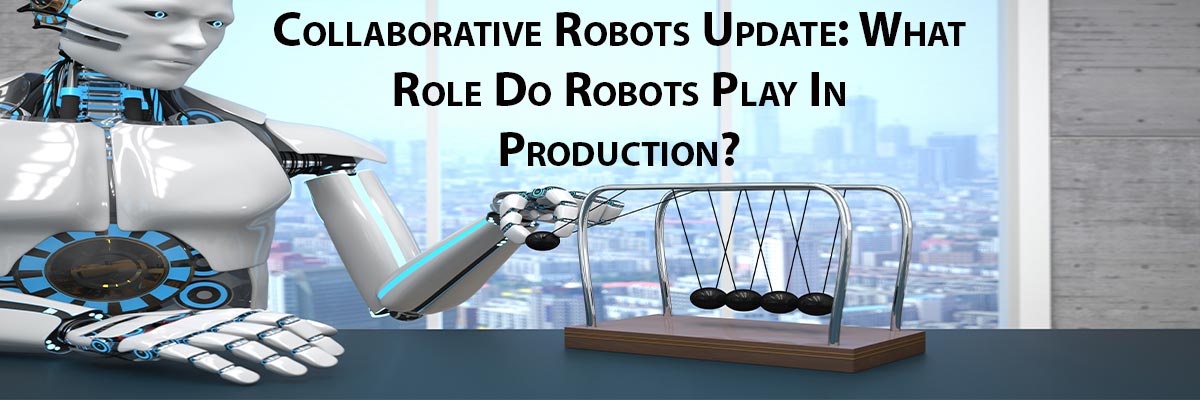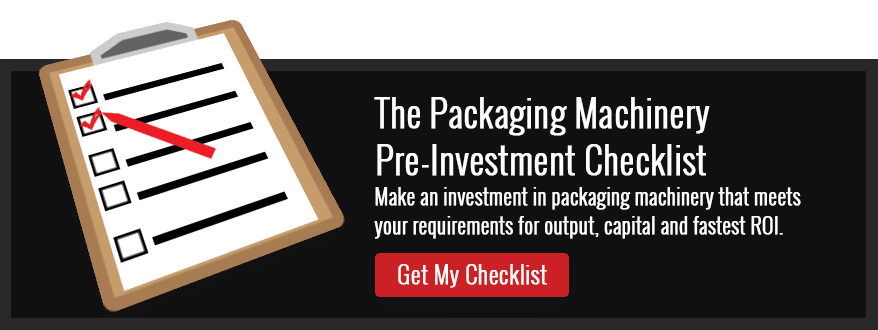Collaborative Robots Update: What Role Do Robots Play In Production?
Collaborative robots can do many things — from autonomous robots that can work together with human beings in an office space, to industrial co-bots having protective guards in place. Industrial co-bots are very complicated machines that will work with human beings to improve processes and streamline production. These co-bots support a human operator in a conjoined working environment.
What are these 'co-bots' and what can they do for your packaging line? Furthermore, where are they heading in the future? Find out here:
What Is A Collaborative Robot?
A collaborative robot (or CO-BOT) is a robot made to interact and coexist with human counterparts in a shared physical space.
A collaborative robot is a single or double robotic arm that can be trained to mimic motions or gestures. These robots can repeat the task over and over again. Some of these robots will improve upon the trained motions. After learning from the repetition of movements, they can learn to do better work.
These co-bots are also designed with safety measures. They have sensors which detect when a human counterpart enters a collaborative space. When this happens, the robot will slow down or come to a complete stop. When the human leaves the collaborative space, the robot continues to work.
What Collaborative Robots Do
Collaborative robots work in tandem with a human counterpart and/or other packaging machinery. The extent of the actions and responsibilities of the robot depend on the make and model of each co-bot. How and what it is trained to do also effects the extent of the actions taken by the robot.
Co-bots can help with assembling parts, stocking shelves and packaging goods. Each action can be taught to the robots by a human being.
Different models of collaborative robots have different specialties. Each robot is designed for specific actions. The actions of the robots are dependent on the interactions or lack there of with human beings.
Are You Asking The Right Questions For Your Next Machinery Purchase?
Download our comprehensive pre-investment checklist to make a sound purchase
Collaborative Robots On The Packaging Line
Many companies use collaborative packaging robots to generate efficiencies in their operations. Collaborative packaging robots or "co-packers" help companies get their products onto store shelves.
Collaborative packaging robots can be automated to increase their own productivity. They can adapt to constant changes in the consumer market. Co-packers are an excellent choice for many sorting and packaging responsibilities. Co-packers give their human counterparts the ability to focus on other work.
If your production line is contract driven with short product life cycles, co-bots are a useful tool. Co-bots can be adapted to various tasks with simple training from a human co-worker.
Collaborative packaging robot's set up and implementation is quick and easy. This makes them a perfect choice for the ever changing dynamics of short runs and for switching from one product to another, day in and day out.
These technological wonders can free up human workers for more complicated actions. This allows your packaging line to virtually run itself.
Pros Of Collaborative Robots
- Flexibility
- Accuracy
- Easy to install
- Never tires
- Can run 24/7 without changing employees
- Easy to train
Cons Of Collaborative Robots
- Cost
- Maintenance
- Availability of technicians
- Can only do certain tasks
- Increased Fire Hazard
One of the most common concerns about collaborative robotic technology is artificial intelligence. Some fear that these technologies will eventually be fully automated. Some feel that hundreds of thousands of people could loose their jobs to robots.
There are more than a few futurist novels predicting this dystopian future. Fear of lower class workers rebelling out of desperation fuels the idea of a universal basic income. If machines do replace too many humans, that may be necessary.
These dark visions of the future can be entertained as one of many possible outcomes. But, mechanized work environments rarely threaten job seekers. The continual advancements in robotics have proven to be an agent of change. But a large loss of jobs for humans is not currently a reality.
From The New Yorker:
"This thesis has been rolling around like a marble in the bowl of a lot of people’s brains for a while now, and many of those marbles were handed out by Martin Ford, in his 2015 book, “Rise of the Robots: Technology and the Threat of a Jobless Future.” In the book, and in an essay in “Confronting Dystopia: The New Technological Revolution and the Future of Work” (Cornell), Ford acknowledges that all other earlier robot-invasion panics were unfounded. In the nineteenth century, people who worked on farms lost their jobs when agricultural processes were mechanized, but they eventually earned more money working in factories. In the twentieth century, automation of industrial production led to warnings about “unprecedented economic and social disorder.” Instead, displaced factory workers moved into service jobs. Machines eliminate jobs; rising productivity creates new jobs."
All in all, we have yet to see any evidence for a mass loss of jobs due to the rise of robots. In the age of artificial intelligence and augmented reality, it is still an unwarranted fear. While there are some valid concerns over these issues as these technologies evolve, there is no threat of such an event currently. For the foreseeable future, robots will not be taking our jobs.
The Future Of Collaborative Robots
As for what the future holds regarding collaborative robotics and the inevitable growth of artificial intelligence, one thing is for sure... These co-bots will become more and more "intelligent" as time moves forward. AI will become increasingly advanced.
With a growing human population and high demand for products, these robots may cause some employment issues. This may result in companies needing to re-organize their employee base. To stay ahead of the curve, new responsibilities and work for the human population will need to arise.
However, as stated in The New Yorker article above, history has been molded by technological advancements in robotics. Machine learning and artificial intelligence are changing human beings. We will have to to adapt and move with the changes these technologies bring.
Given time, these technological advancements may indeed deem some jobs unavailable to humans. But as these changes take place, new opportunities for human workers will also come about. The ever evolving technologies that have brought humans and robots together will continue to change us and our work force.
At the end of the day, worries about robots stealing millions of jobs is but a fantasy. If anything, these robots have improved the work space for human employees.
The future of these technologies will impact many of our lives, but as time moves forward, new opportunities will come to fruition. As robots and people continue to work together, we will discover more work for ourselves.
About Nathan Dube
As the Digital Marketing Specialist at Industrial Packaging, I am honored to create content for such a phenomenal company and work with one of the greatest teams in the Packaging Industry. Whether creating a video, writing blog posts or generating other pieces of content and multimedia, I am always excited to help educate and inspire our prospects and clients to reach their highest potential in regards to their packaging processes and needs.




